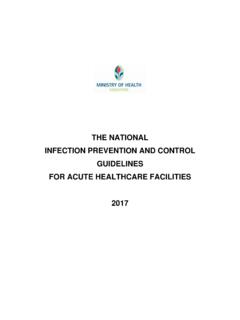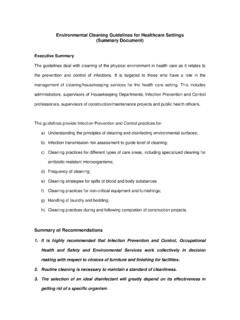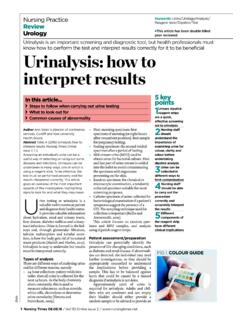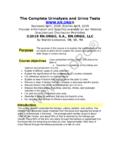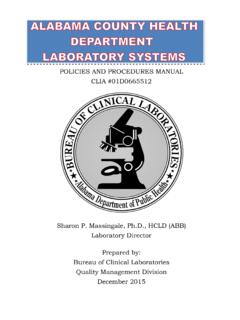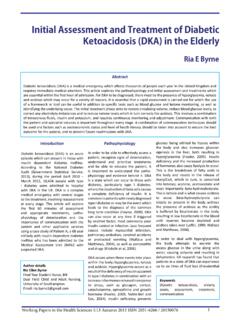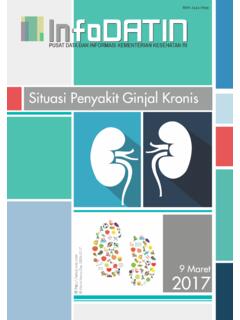Transcription of MOH CLINICAL PRACTICE GUIDELINES 1/2017 …
1 1 MOH CLINICAL PRACTICE GUIDELINES 1/2017 HYPERTENSION EXECUTIVE SUMMARY Contents Page Introduction and how to use this document 2 Classification of hypertension 4 Stratifying risk and approach to hypertension management 7 Treating high blood pressure 9 Treatment goals and follow up 16 Treating high blood pressure in special conditions 18 Treatment of associated risk factors 22 CLINICAL quality improvement 22 Levels of evidence and grades of recommendation 23 College of Family Physicians Singapore Singapore Hypertension Society Chapter of Family Medicine Physicians Academy of Medicine, Singapore Chapter of Endocrinologists College of Physicians, Singapore 2 EXECUTIVE SUMMARY OF RECOMMENDATIONS Introduction This is the executive summary of the MOH CLINICAL PRACTICE GUIDELINES (CPG) on Hypertension.
2 It is intended to be used with reference to the full version of the CPG which is freely available on the MOH website at this link: Hypertension is the leading associated risk factor for cardiovascular disease. It is prevalent and increasing in many developing and developed countries. The Singapore National Health Survey (NHS) 2010 showed that the crude prevalence of hypertension (defined as BP of 140/90 mmHg) among Singapore residents aged 30 to 69 years was , compared to in 2004 and in 1998. However, the age-specific prevalence for hypertension rises markedly from age 40 years onwards and, with our ageing population, we continue to face challenges in the prevention and control of hypertension. Target audience These GUIDELINES are developed for all healthcare professionals in Singapore, as an evidence-based resource to provide up-to date information and guidance on diagnosis, classification, treatment, outcomes, and follow-up.
3 How to use this document All recommendations made in the CPG are summarised in this document. Please note the following: a. Each recommendation has a corresponding Grade of Recommendation and Level of Evidence (refer to back cover page for details) b. The details/explanations of each recommendation can be found in the full CPG document using the page numbers provided. Key recommendations are highlighted in light brown . 3 Commonly used abbreviations The following is a list of abbreviations commonly used in this set of GUIDELINES (arranged in alphabetical order), and a description of what they represent: ABPM ambulatory blood pressure monitoring ACE angiotensin-converting enzyme ACR albumin:creatinine ratio ARB angiotensin II receptor blocker BMI body mass index BP blood pressure CAD coronary artery disease ECG electrocardiography eGFR estimated glomerular filtration rate HBPM home blood pressure monitoring LVH left ventricular hypertrophy NHS National Health Survey PCR protein.
4 Creatinine ratio RAAS renin-angiotensin-aldosterone system RCT randomised controlled trial 4 Classification of hypertension D Classify hypertension according to systolic BP and diastolic BP levels. When the systolic BP and the diastolic BP fall into different categories, the higher category applies. (Grade D, Level 4, CPG pg. 18) Definitions are given in Table 1 for subjects who are not on antihypertensive medication and not acutely ill. Table 1 Definitions and classification of BP levels for adults aged 18 years and older (CPG pg. 18) Category Systolic BP Diastolic BP Normal BP < 130 mmHg < 85 mmHg High -normal BP 130 to 139 mmHg 85 to 89 mmHg Grade 1 hypertension 140 to 159 mmHg* 90 to 99 mmHg Grade 2 hypertension 160 to179 mmHg* 100 to 109 mmHg Grade 3 hypertension 180 mmHg* 110 mmHg Isolated systolic hypertension 140 mmHg* < 90 mmHg * Isolated systolic hypertension is graded according to the same level of systolic BP.
5 As BP is characterised by large spontaneous variations, the diagnosis of hypertension should be based on multiple BP measurements taken on several separate occasions. How should BP be measured? For clinic or office BP measurement, the BP is measured at rest several times on several occasions, with the patient in a supine or sitting position. 5 D Use the following procedures when recording BP: 1. Allow the patient to sit or lie down for at least 3 minutes before measuring the BP. 2. The patient should refrain from smoking or taking caffeinated drinks during the 30 minutes before measurement. 3. Use a cuff with a bladder 12-13 cm x 35 cm in size. A cuff with a larger bladder should be used for large upper arms; where a thigh cuff should be used for extremely large arms.
6 4. When using the auscultatory method, use the disappearance of phase V Korotkoff sounds to measure the diastolic BP. 5. Measure the BP in both arms at the first visit; subsequently re-measure BP on the arm with the higher reading, if applicable. 6. Take 2 or more readings separated by 2 minutes. Average these two values. If the first two readings differ by 5 mmHg or more, further readings should be obtained and averaged. 7. In elderly subjects and diabetic patients, measure the BP in the supine (or sitting) position, and within 2 minutes after standing, to record any postural fall in BP. 8. Place the manometer cuff at the level of the heart, regardless of the position of the patient. (Grade D, Level 4, CPG pg. 19) When measuring BP in clinic or office, the alerting response can result in exaggerated BP, leading to the diagnosis of isolated clinic ( white-coat ) hypertension.
7 Compared to clinic or office measurement, BP values obtained by HBPM or by 24-hour ABPM are usually several mmHg lower. Both HBPM and ABPM methods are valid. D Wherever practicable, HBPM or ABPM (in that order) should be offered to younger patients, and to those whom target organ damage is found without a raised BP. (Grade D, Level 4, CPG pg. 20) C The preferred manometer is an automated oscillometric device, with or without memory. (Grade C, Level 2+, CPG pg. 21) D To ensure reliable values, the patient or carer needs training in device use, and a BP log-book (for basic devices without memory). (Grade D, Level 4, CPG pg. 21) 6 GPP ABPM is recommended whenever in doubt about the diagnosis, to confirm borderline hypertension or abnormal results from HBPM. (CPG pg.)
8 21) GPP ABPM is also indicated for older, cognitively impaired, anxious or obsessive patient s, in whom HBPM might be unreliable or inappropriate. (CPG pg. 21) The definitions of hypertension based on HBPM and ABPM are listed in Table 2. Table 2 Definitions of hypertension in HBPM and ABPM (CPG pg. 22) Systolic BP Diastolic BP HBPM 135 mmHg 85 mmHg ABPM Daytime 135 mmHg 85 mmHg 24-hour 130 mmHg 80 mmHg Night-time 120 mmHg 70 mmHg D Patient s with an average BP 135/85 mmHg measured repeatedly at rest at home may be regarded as hypertensive. (Grade D, Level 3, CPG pg. 22) D Patient s with a 24-hour ABPM average BP 130/80 mmHg, or a daytime average BP 135/85 mmHg, or a night-time average BP 120/70 mmHg, are regarded as hypertensive.
9 (Grade D, Level 4, CPG pg. 22) How should hypertension be evaluated? D Routine CLINICAL evaluation of a patient with elevated BP includes the following: 1. CLINICAL and family history 2. Full standard physical examination 3. Laboratory investigations, including: a) Urine analysis : dipstick for haematuria/albumin, microscopic examination, and test for albuminuria b) Measurement of serum concentrations of electrolytes, creatinine, urea, fasting glucose and fasting lipids c) Computation of eGFR 4. 12-lead ECG (Grade D, Level 4, CPG pg. 24) 7 The identifiable secondary causes of hypertension are listed in Table 3 below. Table 3 Identifiable secondary causes of hypertension (CPG pg. 25) Identifiable secondary causes of hypertension 1. Drug -related and substance-related* causes 2.
10 Chronic kidney disease 3. Renal artery stenosis 4. Primary hyperaldosteronism 5. Hypercortisolism (Cushing s syndrome) 6. Phaeochromocytoma 7. Thyroid or parathyroid disease 8. Coarctation of the aorta 9. Obstructive sleep apnoea syndrome 10. Nephropathy from Type 1 diabetes mellitus 11. Rare monogenic ion transport disorders * Several non-prescribed and illicit substances causes hypertension, liquorice, cocaine, amphetamine, crystal methamphetamine, and 3,4-methylenedioxy-methamphetamine (MDMA, Ecstasy ) Stratifying risk and approach to hypertension management GPP Assess the overall cardiovascular risk and the patient s BP to guide the management of high BP. (CPG pg. 26) D Refer to the locally adapted Framingham Risk Score to estimate cardiovascular risk.

